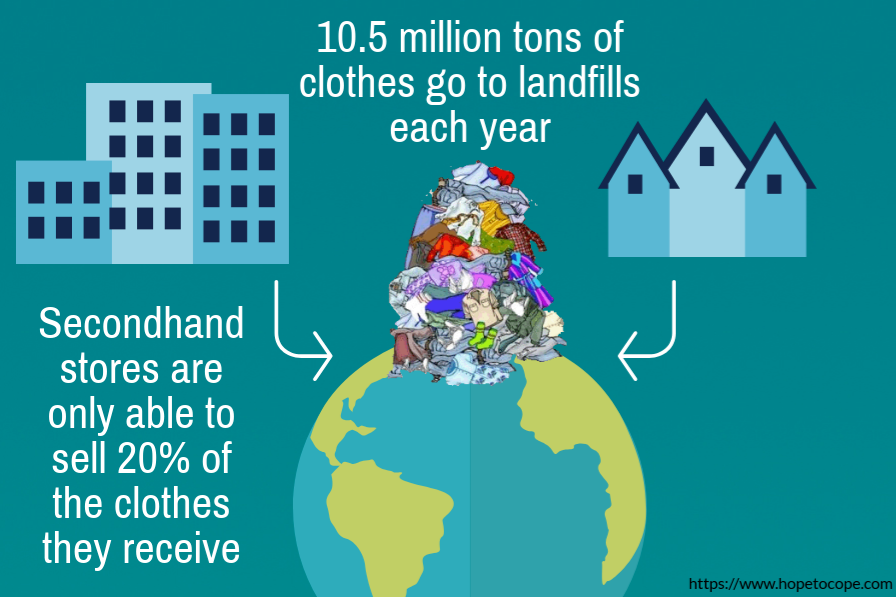“Fast fashion” comes at a high cost
Since fast fashion is so inexpensive, it also contributes to a “throwaway culture,” where people only wear an item once or twice before discarding it.
March 5, 2019
Today, it’s not difficult to find inexpensive, trendy clothing online or at any retail store. At Forever 21, a cotton tank top costs only $2.90, a cardigan costs $6.00 and a pair of skinny jeans costs $12.90. How else could a high school student afford to dress for the theme of the latest school event?
Popular clothing brands—including Zara, H&M and Forever 21—promote “fast fashion,” which is when manufacturers copy high-end trends and bring them to consumers for much less. While this practice makes stylish clothing more affordable, fast fashion comes at a high social and environmental cost.
This trend relies on a low price tag above all else, encouraging manufacturers to cut the time and cost of production by using low quality materials and cheap labor in developing countries with less stringent labor standards.
However, few Americans seem to care. An Associated Press-GFK poll found that the majority of Americans prefer to purchase cheaper clothes rather than those with a “Made in the USA” label. Brands that use ethical labor practices can’t compete because they need to charge higher prices to produce similar styles.
Since fast fashion is so inexpensive, it also contributes to a “throwaway culture,” where people only wear an item once or twice before discarding it. In fact, the average consumer now purchases 60 percent more clothing items than they did in 2000—and keeps each garment only half as long, according to the World Resources Institute.
It’s easy to justify buying an item for single-use when it only costs a few dollars. But when so much clothing is constantly thrown away, it creates harmful environmental waste and excess product that secondhand stores can’t easily manage. About 10.5 million tons of clothes fill American landfills every year, and secondhand stores receive so much clothing that they can only resell 20 percent of it, according to a 2015 Atlantic article.
The fashion industry is one of the largest global contributors to water pollution and climate change, according to a MSNBC analysis. Although it might not seem as directly connected to the environment as turning off lights or recycling plastic, reforming our fashion habits can have a huge impact on the planet.
It’s certainly true that sustainable clothing—the alternative to fast fashion—is significantly more expensive. Realistically, many simply can’t afford to spend more money on clothing, making it difficult to convince them that the extra cost to support ethically-made products is worth it. But that isn’t an excuse for people who can afford it but choose not to.
There are plenty of low-cost options to find fashionable clothing—like shopping at secondhand retail stores instead of purchasing new clothes or investing in a few high-quality pieces—that will reduce clothing waste and actually save money in the long term.
Although a good deal is hard to resist, it’s important to consider the consequences before buying into fast fashion.











